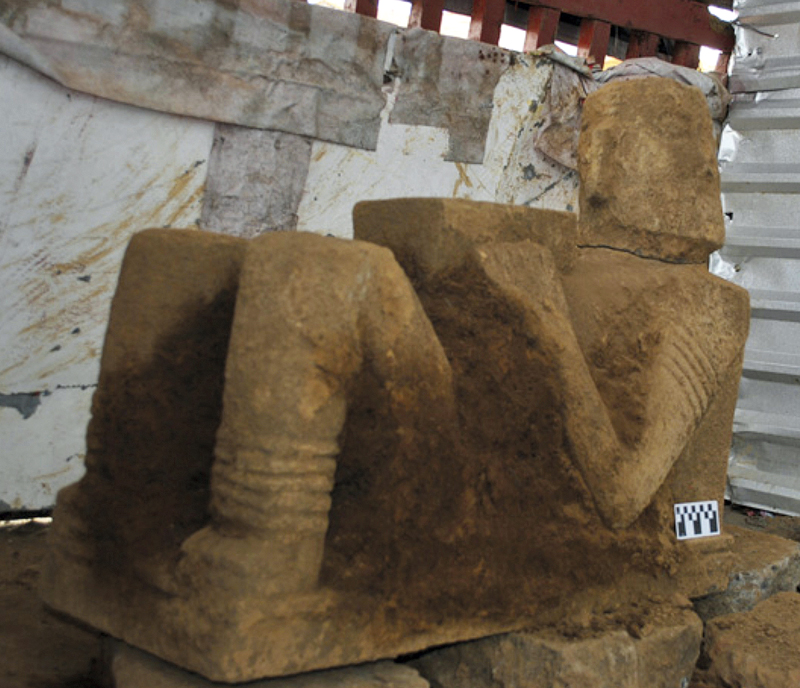
INAH
Ritual table used in ceremonies by the ancient Mayan people of MexicoINAHEmployees from Mexico’s National Institute of Anthropology and History (INAH) have restored a sculpture representing a chacmool, a ritual table thought to have been used in offerings and sacrificial ceremonies, that was discovered in the city of Pátzcuaro in August. The basalt sculpture, 90 centimeters (cm) in length and 80 cm high, was dated to the Late Postclassic Period of the Mayan civilization (1350–1521 AD). It is speculated to have been moved from somewhere else nearby, since no other archaeological material was found at the site. At the end of the nineteenth century, Norwegian ethnologist Carl Lumholtz (1851–1922) acquired a chacmool in Pátzcuaro that had originally been found in Ihuatzio, 15 kilometers away, and is now on display at the American Museum of Natural History in New York, USA. There are three other Ihuatzio chacmools in museums around Mexico. Other sculptures of this type, dating from 900 to 1521 AD, have been found in Tula in the state of Hidalgo, Chichén Itzá in Yucatán, and in the Templo Mayor in Mexico City (INAH, September 4).
Republish